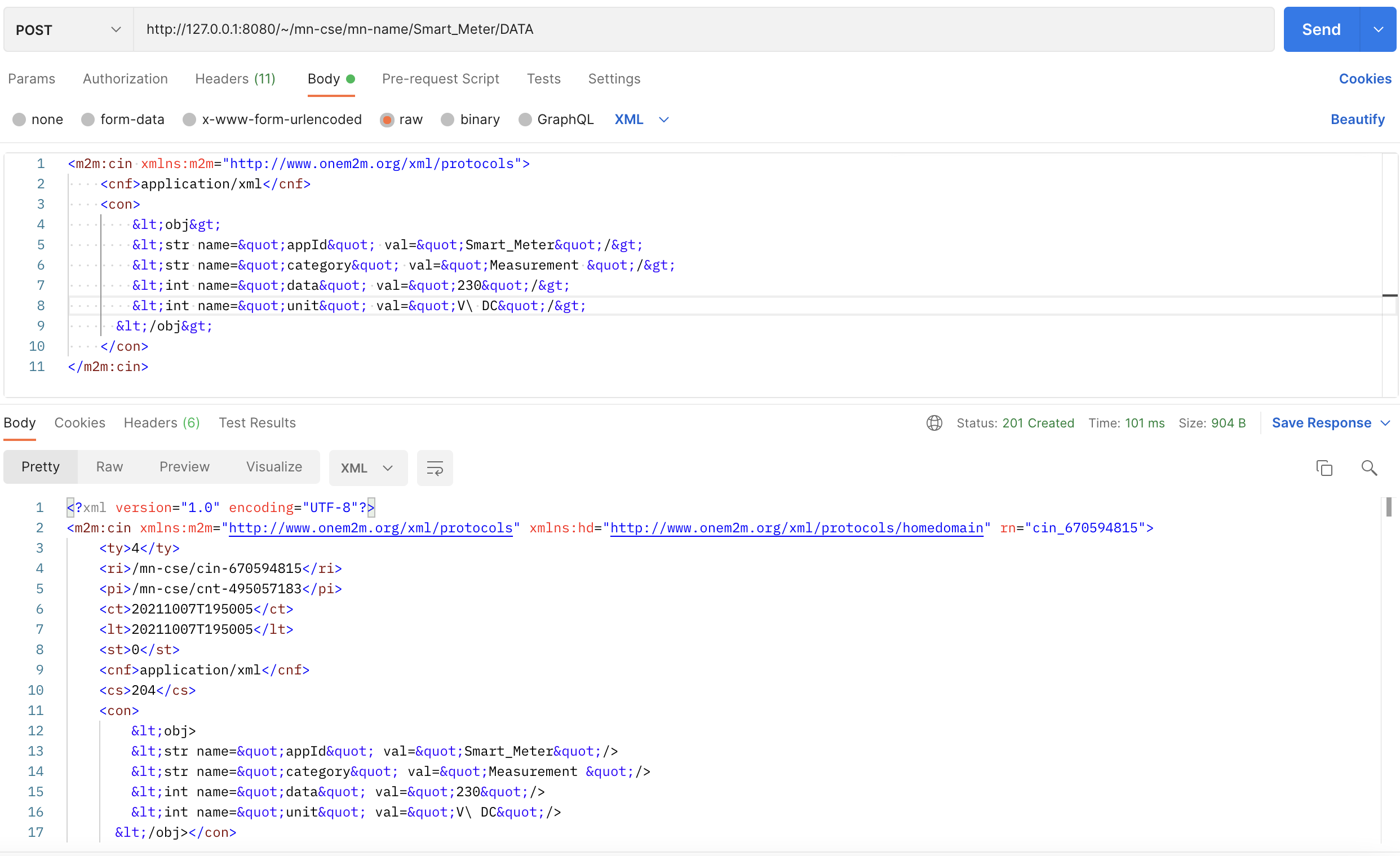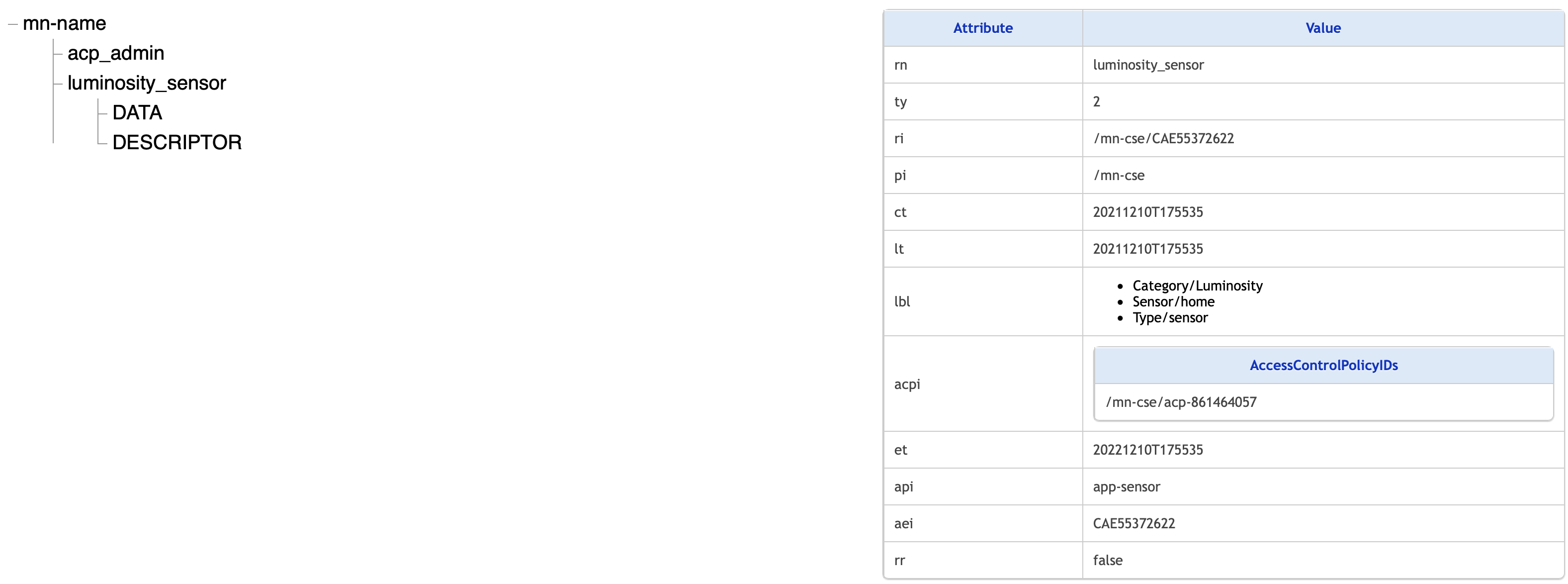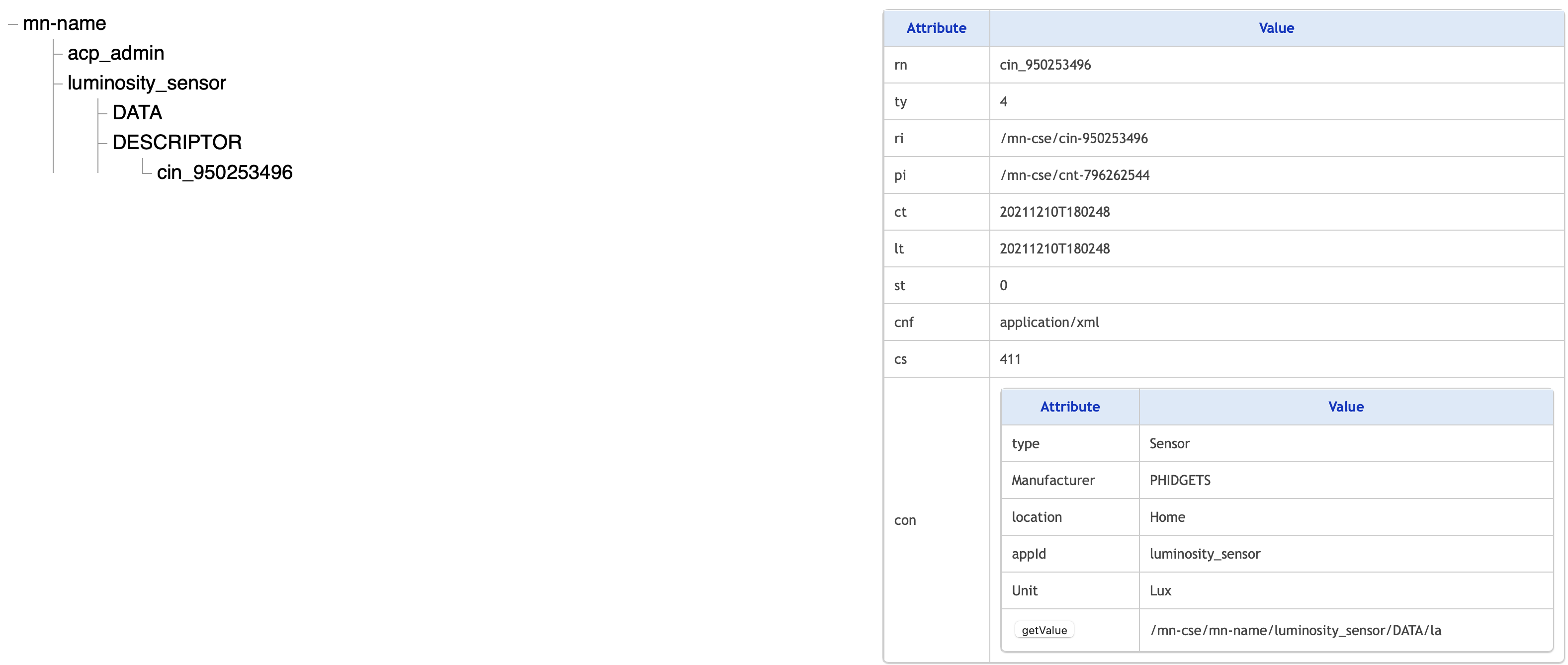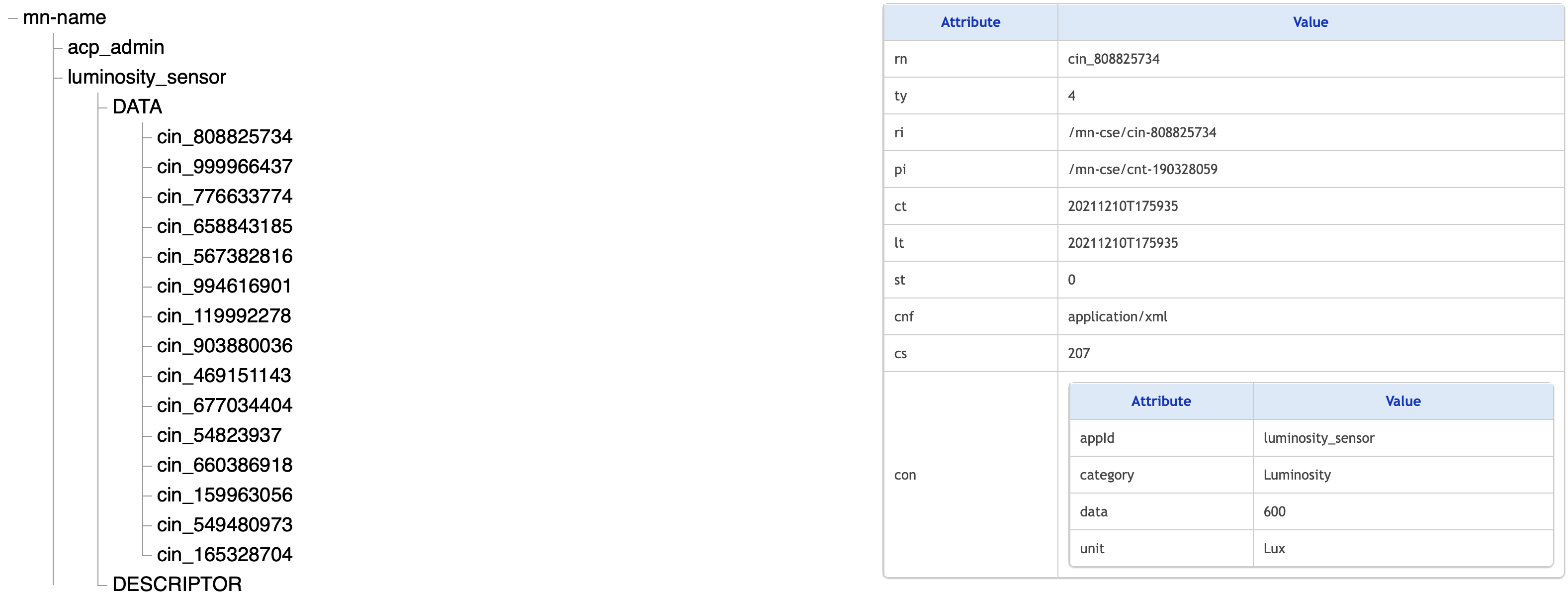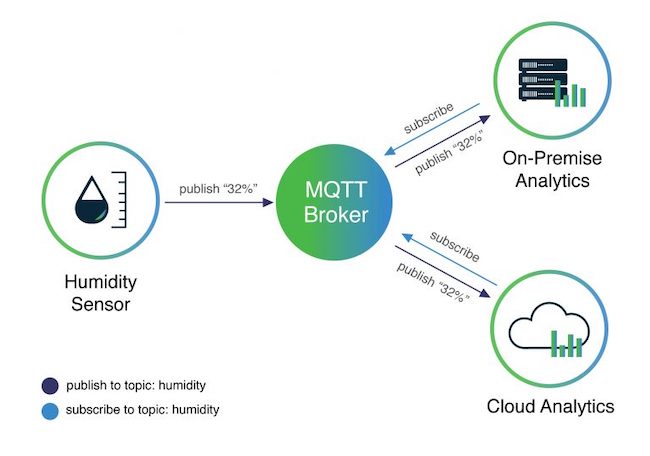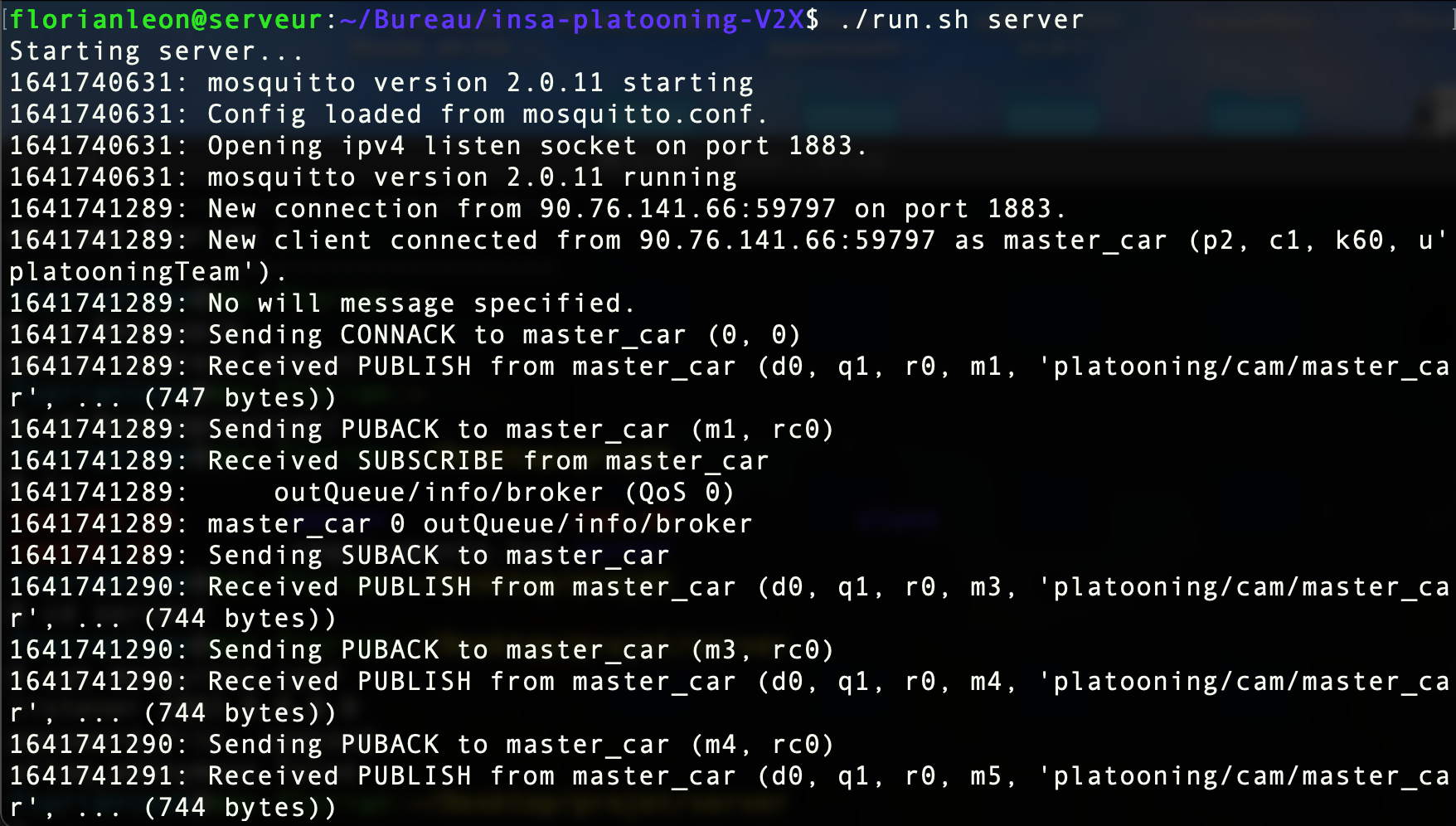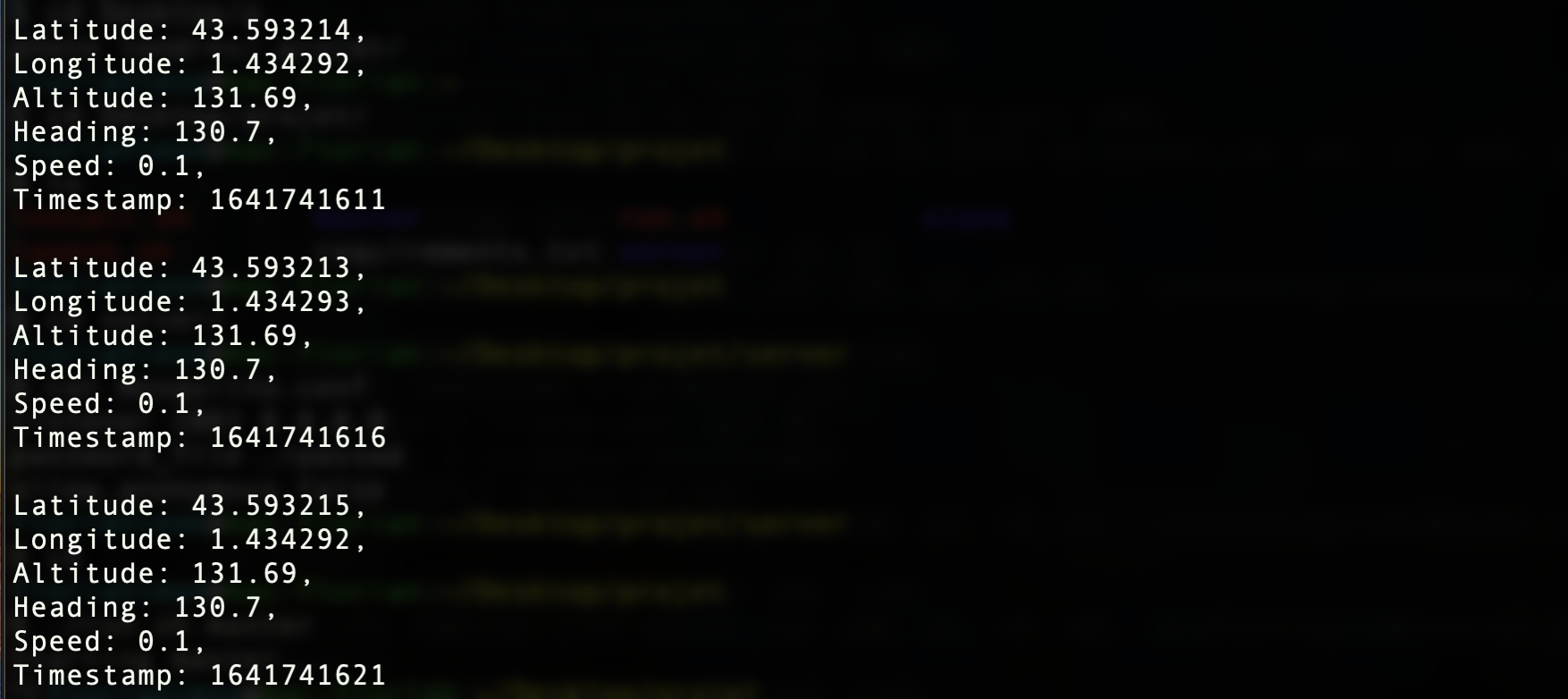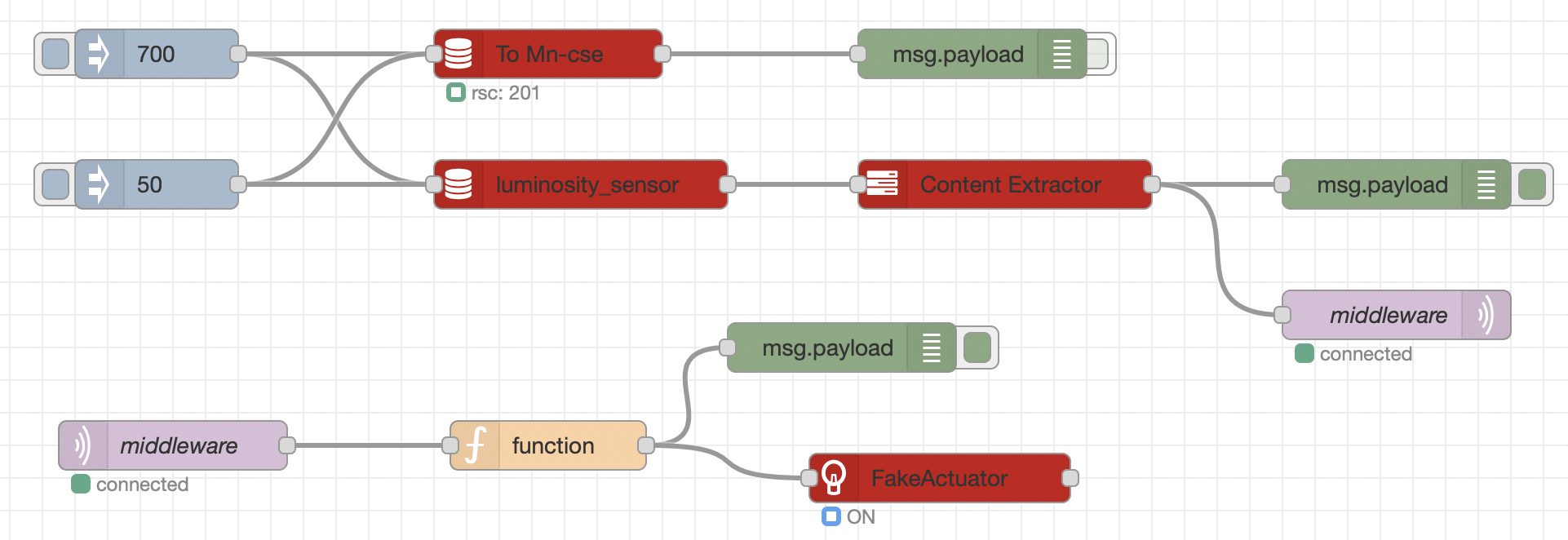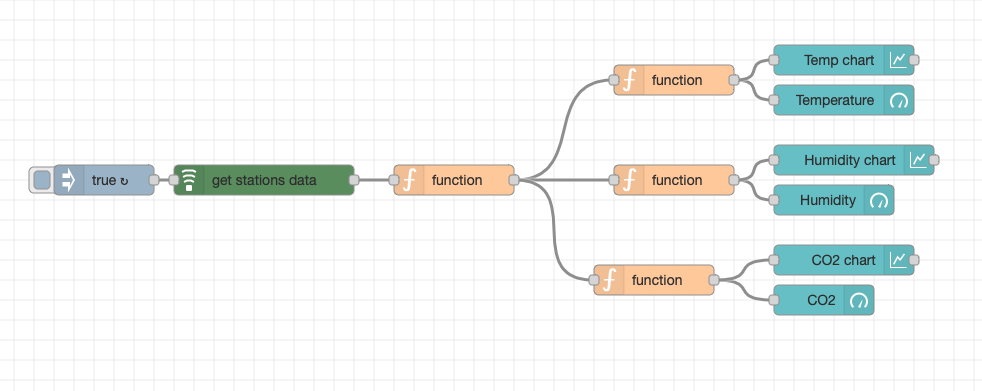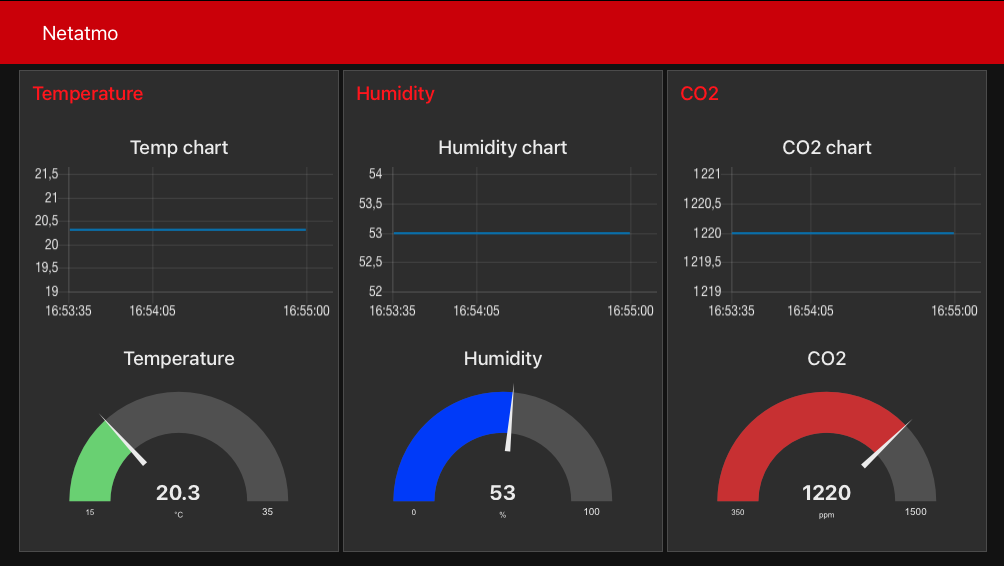Descriptive part
Middleware for IoT is a subject that allows us to discover the basics of communications between machines with two protocols used worldwide, ONEM2M and MQTT and finally the processing of this information via node-red.
It allowed us to master these 3 technologies that we then use in our innovative project. It is thus organized in 3 practical works: ONEM2M, MQTT and node-red, which I will detail quickly via examples. For a more detailed definition of terms and achievements, I invite you to read the reports.
TP n°1:
OneM2M

With OneM2M, we need to create AE resources using HTTP request or a client. We fully set access rights to the right users and then fully describe the application.
MQTT, for "Message Queuing Telemetry Transport", is an open source messaging protocol that provides non-permanent communications between devices through the transport of their messages. It is based on a system of publication and subscription via a broker.
TP n°2:
MQTT

TP n°3:
node-red
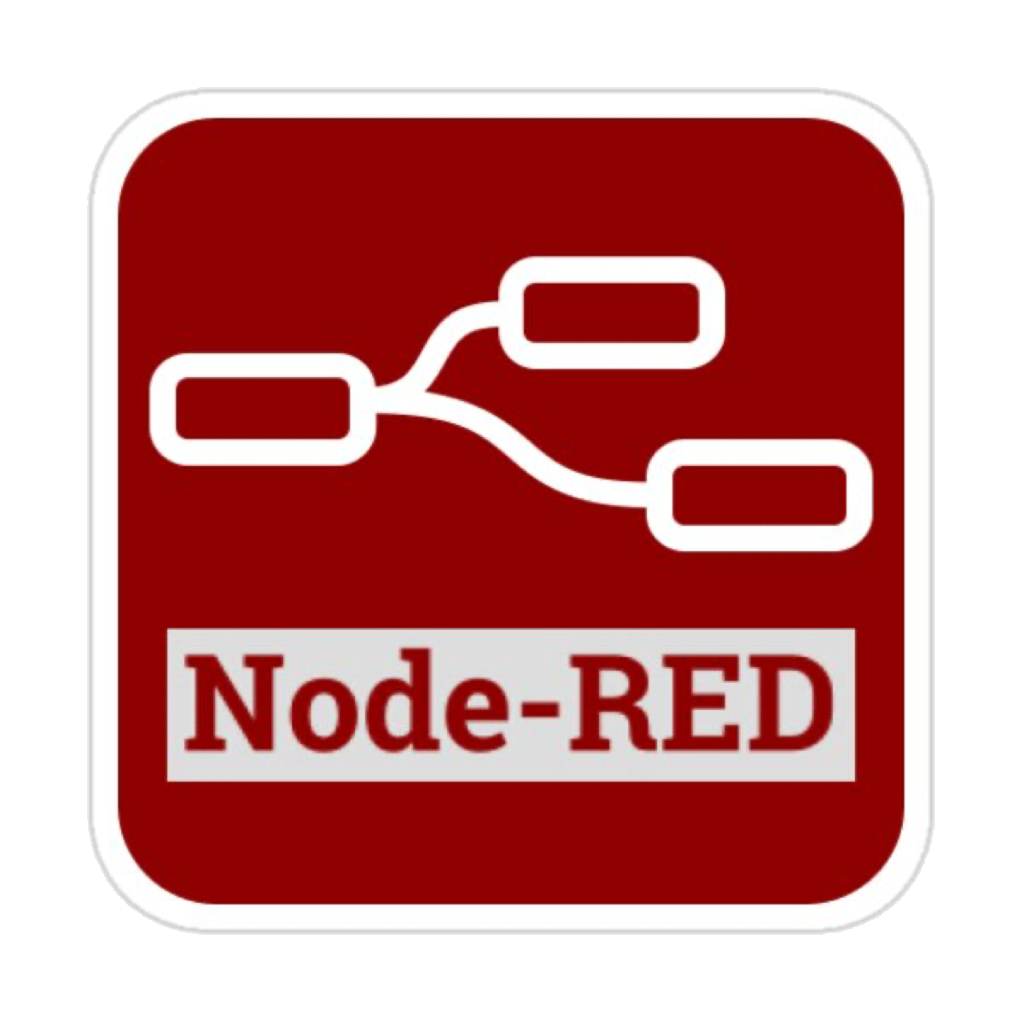
Node-RED is a programming tool for wiring together hardware devices, APIs and online services in new and interesting ways. It provides a browser-based editor that makes it easy to wire together flows using the wide range of nodes in the palette that can be deployed to its runtime in a single-click.

